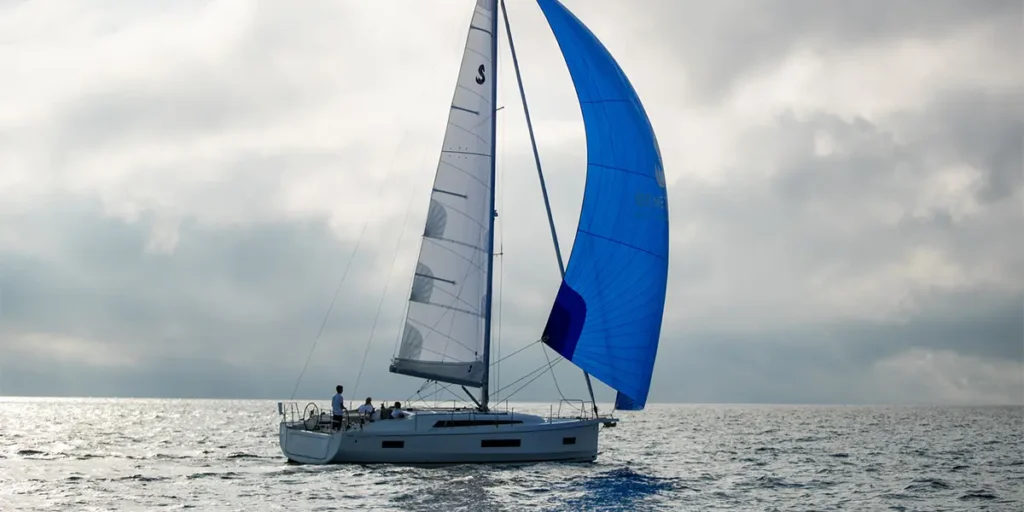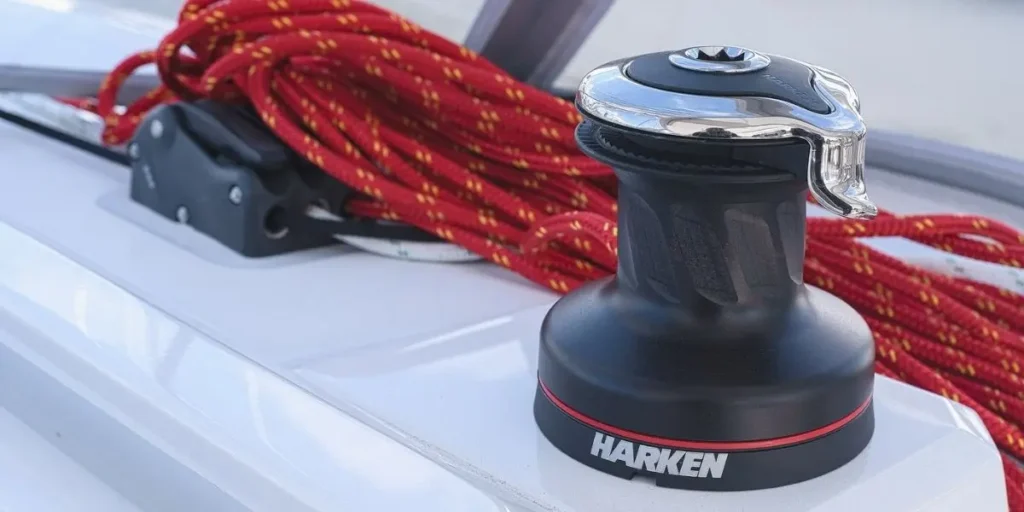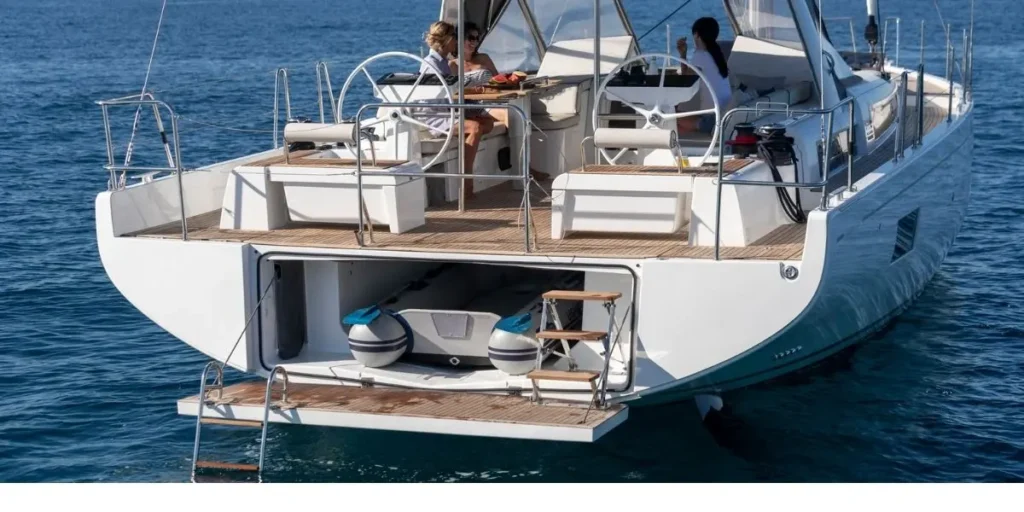Offshore Sailing Checklist To Prepare For Any Situation.
What are the joys of sailing? Is it solidarity, the connection with nature, or the technical skills? Maybe it’s all of the above. Sailing is one of those sports or hobbies that means something different to every captain. But one common feeling? Excitement.
There’s plenty to prepare for when it comes to embarking on an extended sailing trip. You may need to perform maintenance on the boat, study maps and weather patterns, meal prep, purchase extra equipment, or create a packing list. Worried that you’re missing something? We’ve got you covered. Here are 9 things every sailor should have during an extended trip. Remember — excitement is the best thing you can bringProperly Sized + Fitted Storm Sails.
Properly Sized + Fitted Storm Sails

We get it — storm sails are one of those items that we shove under a bunk and don’t think about using until the last minute when the wind is howling and it’s too late to hoist them up. But seriously, storm sails are handy. Whether you’re cruising on a catamaran or sailboat, it’s important to have proper storm sails — both storm trysail and storm jib.
Test them before your trip to see if they fit. Hoist them up to make sure everything works and that it can be done by one person under storm conditions. It’s beneficial to familiarize yourself with the task so that it’s easier to accomplish when you’re in a bad weather situation. The last thing you need is to be heading into a storm without the proper sails or familiarity.
Sail Repair Kit

On that note, having a good sail repair kit on board is a good idea. You can buy one online or create a kit. Make sure it includes various sized needles, wax thread, palm (both right and left-handed), pliers, shears, spectra webbing, polyester webbing, rubbing alcohol, double-sided tape, and cloth (nylon or laminate). Practice a few repairs before you leave and you’ll be golden.
Self-Tailing Winches

You won’t have to worry about this if you’re sailing a Beneteau Oceanis, which comes with electric two-speed winches. But if you’re sailing an older sailboat, it may come in handy to upgrade to a self-winding winch. Upgrading will depend on factors including size and use, but overall, an electric winch is a convenient way to hoist the mainsail. The ability to push a button and receive safe and convenient handling is a relief for a small or one man crew.
Dinghy

Having a good dinghy onboard your sailboat will let you travel onshore while moored or anchored. An electric outboard is powerful and durable — it also means you don’t have to carry gas (but need to think about options for recharging it). The Beneteau Oceanis 54 comes with a longitudinal dingy garage at the transom of the boat, which can hold an 8-foot inflatable tender. That frees up space to the cockpit for dining and lounging.
Watermaker

You need a watermaker for long voyages. Plain and simple. They’re used to desalinate the ocean water. We know, we know, watermakers are quite large. So it might be worth it to build into one of the cabinets. Carrying fresh water in a 750-gallon water tank is heavy, so the option to suck it out of the ocean reduces weight and improves sailing performance and speed.
Keep in mind that watermakers only effectively desalinate about 10% of the water, and require about 800 psi. Some watermakers can filter about 1-8 gallons of water per hour.
Headlamp

We probably don’t have to remind you, but double-check that you packed a headlamp and flashlight. And double-check again. It can be a lifesaver if you’re ever in a situation where you need to move the boat in the dark. A portable light source is invaluable, especially if you find one with rechargeable batteries. Invest in a great headlamp and have no regrets.
First Aid Kit

You know this, we know this. We’re just double-checking that you have a first aid kit that can save a life. A great first aid kit will be stacked with the following: bandages, gauze pads, absorbent dressings, safety pins, soap, irrigation syringe, tweezers, shears, aspirin, ibuprofen, acetaminophen, loperamide, diphenhydramine, thermometer, wound closure strips, board splints, emergency blanket, and alcohol prep pads.
Upgrade your medical kit for boating with an extra tincture of benzoin to help bandages stick to skin, silicon tape to keep wounds dry, hot and cold packs for pain relief, aloe to soothe sunburn, sunscreen, and meclizine or dimenhydrinate for seasickness.
Seasick Medication

You could be the most experienced boater or sailor but there may come an unexpected time when you get seasick and you’ll be thankful to have medication. Speak with your doctor to see which seasick medication is best for you. There are plenty of options for natural forms of seasick prevention such as wrist pressure bands or ginger. There’s also over-the-counter or prescription medication. Talk to doc and bring seasick medication on board so that you’re able to stand watches and help with sail changes or reefing.
Foul Weather Gear

Nothing worse than manning the helm when it’s raining and you’re wearing khakis. Yeah. Pack bad weather gear including durable jackets, pants, and boots. Breathable fabrics are great when sailing around the tropics while heavy gear is more beneficial for cold weather passages such as Alaska or Pacific Northwest. We like Helly Hansen because you can buy one jacket and it will last you a lifetime.
Before your next sailing adventure, make sure you have each of these items for a safe and exciting trip. Double-check all safety gear (life jackets, flares, nautical flags, fire extinguisher), navigation equipment and electronics, spare batteries, and outdoor lighting. If you’re looking for a seaworthy sailboat, explore the Beneteau Oceanis range and contact Clark Haley to schedule a showing. When you’re confident in your preparation for offshore sailing or ocean passage, the only find left to do is go. Bon voyage.